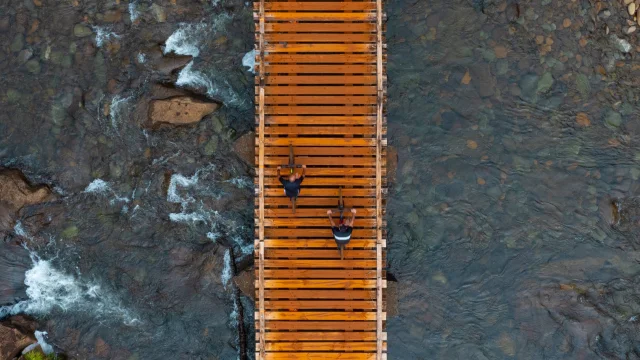 default
default©default|Sud Tourisme NC - Charlotte Bertonneau
 default
default default
defaultNo less than 9,000 hectares of nature await you at the Parc Provincial de la Rivière Bleue (PPRB)! This immense wildlife reserve is just an hour away from Nouméa. Its landscapes of dry and humid forests, mining scrubland, and red trails are home to endemic bird species that are emblematic of the region: the famous cagou, as well as the notou, aka the green pigeon. You’ll also come across true tree monuments, like the great kaori or the giant houp. The park is also perfect for loads of outdoor activities: hiking, mountain biking, kayaking, swimming, moonlit camping, and more. The PPRB, a must-visit site in the Great South region, is an ideal spot for an easy escape into nature.
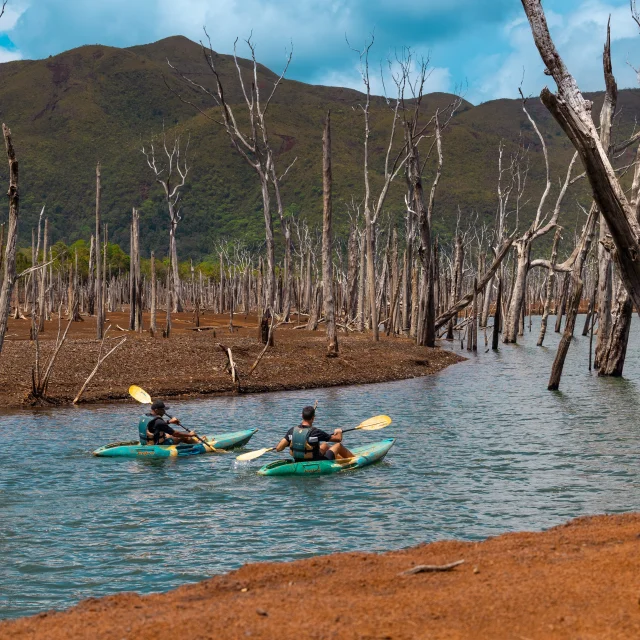 Sud Loisirs Parc De La Riviere Bleue Charlotte Bertonneau 8343
Sud Loisirs Parc De La Riviere Bleue Charlotte Bertonneau 8343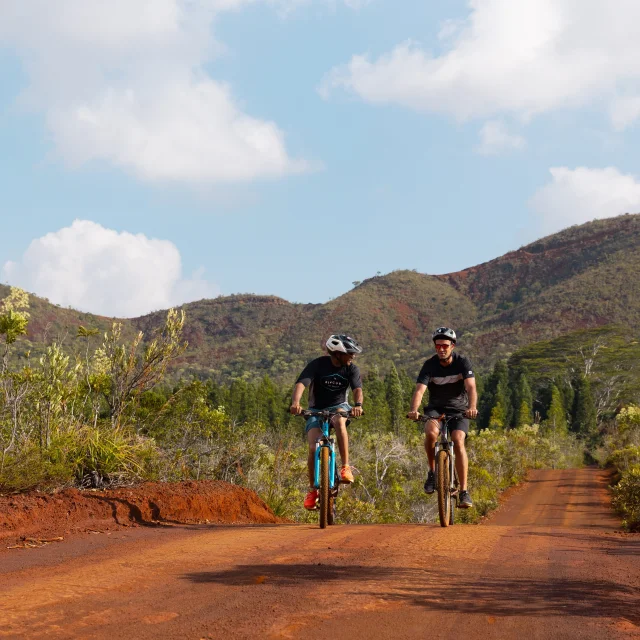 Aventure Pulsion Parc De La Riviere Bleue Charlotte Bertonneau 3645
Aventure Pulsion Parc De La Riviere Bleue Charlotte Bertonneau 3645 default
defaultAnother of the South Province’s green lungs, the Grandes Fougères park stretches across the communes of Sarraméa, Farino and Moindou. It takes a little under 2 hours to get there from Nouméa. Once you’re there, head to the ticket booth to discover its numerous trails and activities. Mountain biking, foot-biking, hiking, …and the list goes on. The trails, dotted with landscaped areas and viewpoints, make for really enjoyable breaks. In the middle of the rainforest, it’s great to stop and observe the many species of birds and tree ferns, the queens of the park!
 Parc Provincial Des Grandes Fougeres Charlotte Bertonneau 9307
Parc Provincial Des Grandes Fougeres Charlotte Bertonneau 9307The Bourail tourist region is home to a site whose beauty is recognised worldwide: The West Coastal Zone. Listed as a UNESCO World Heritage Site since 2008, it comprises four marine areas. Poé lagoon is one of them, with its colourful coral reefs, and multitude of tropical fish and turtles. It’s also the place where the coral reef is closest to the coast (just 2 km away). There are superb snorkelling spots accessible to the whole family, while scuba diving spots allow access to wonders, including the Faille aux requins (Shark Fault) for spotting guitar rays and the Grand Coude de Kélé for observing pelagic species and sharks.
 Manager
Manager default
default 020813 Ilots Lagon Bourail Photo 004
020813 Ilots Lagon Bourail Photo 004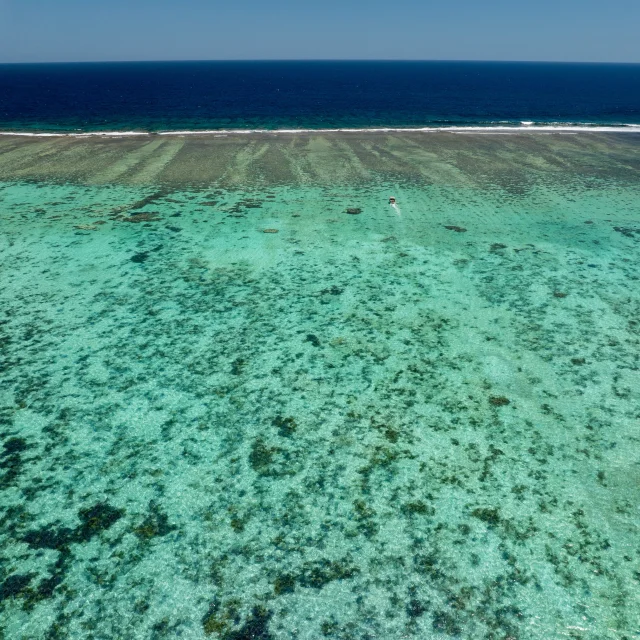 default
defaultA site steeped in history, Domaine de Déva was inhabited by members of the Lapita civilisation three millennia ago. The Tabou Valley also bears witness to a tumultuous past, marked by the last battle of the Kanak uprising of 1878. Today, this provincial nature park in the commune of Bourail remains a treasure trove of biodiversity. Set between the coast and the mountains, it’s a delight for outdoor enthusiasts and families alike. The area is ideal for hiking, horseback riding and mountain biking, with or without electric assistance (information at Maison de Déva). This vast protected area includes a large dry forest. You can observe many bird species there.
Located on the islet of the same name, Phare Amédée is just a 30-minute boat ride from Nouméa! You can get there by water taxi or on an organised excursion. In this protected marine area, you’ll come across a multitude of multicoloured fish, striped sea krait, and turtles. Islet Amédée boasts a picture-postcard setting, with white sandy beaches fringed by coconut palms. Swimming, relaxation and entertainment guarantee an ideal day’s rest.
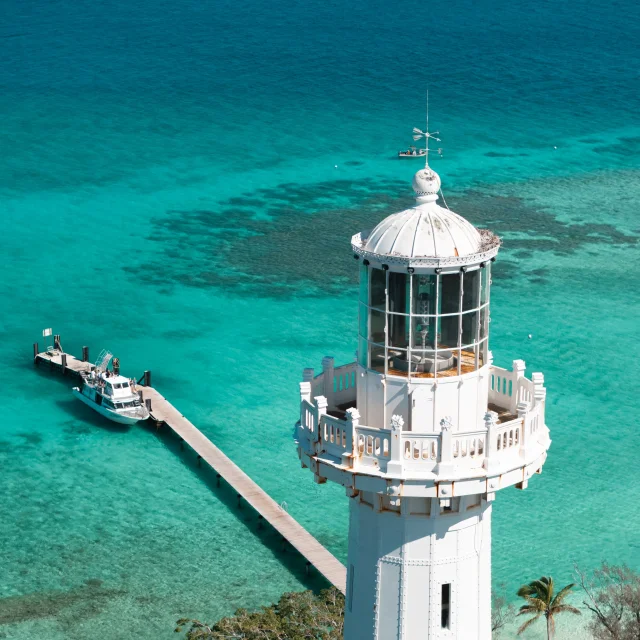 default
default Charlotte 5 2
Charlotte 5 2 default
defaultJust near Nouméa, Dumbéa Provincial Park combines river and nature trails. In just 30 minutes from Nouméa, you can reach the Parc Fayard car park, an essential gateway to the Dumbéa site. From here, a free shuttle service takes you to the entrance of the protected park. Depending on your mood, you can then take one of the hiking trails (several levels of difficulty) or look for the pools and water holes for a refreshing swim in the river. It’s so good to come and picnic in this unspoilt green oasis!
 default
defaultLocated between the Unia and Thio Mission tribes, the Forgotten Coast Park covers no less than 98,000 hectares of protected land and 29,000 hectares of protected sea! With 98% of endemic plant species, hundreds of rare or endangered species, and half of New Caledonia’s rainforests, it represents an invaluable reserve of biodiversity. The best way to discover this park in the Great South is by kayak. Guided by a team of professionals, you’ll reach these remote, deserted landscapes via the coast.
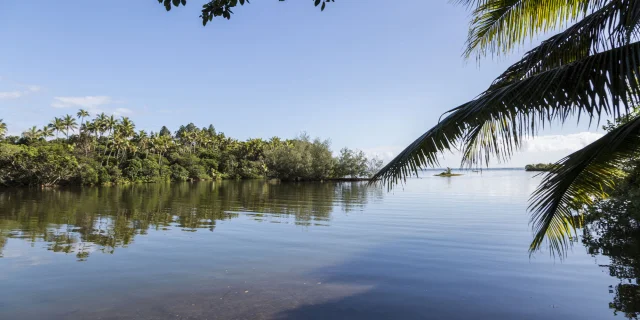 Côte Oubliée - Yaté
Côte Oubliée - Yaté